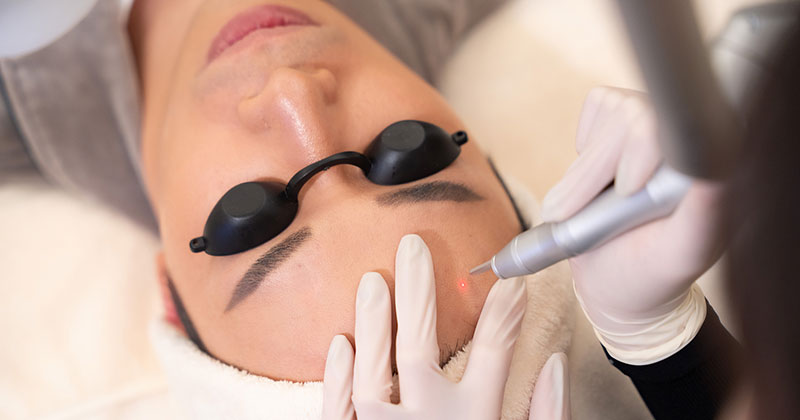Derma Diode Laser in Skin Laser Treatment
Early lasers were primarily used for vascular lesions and tattoo removal. As technology progressed, new wavelengths and delivery systems were introduced, enabling the treatment of a broader range of conditions such as acne, scars, wrinkles, and pigmented lesions.
In recent years, diode laser treatment of dermatologists has received significant attention. Blue diode lasers, in particular, enable precise surgical processes and offer superior control of inflammation in surrounding tissues. This reduced inflammation translates to shorter recovery times for patients, decreased scarring risks, and minimized chances of post-inflammatory hyperpigmentation. Additionally, this precision and control lead to more predictable and favorable clinical outcomes.

450nm 650nm 980nm Diode Laser in Dermatology Laser Treatment
450nm – Blue Laser
- Common Uses: Benign raised skin lesions, acne, scars, pigmented lesions, skin rejuvenation, vascular lesions, diabetic ulcers, bedsores…
- How it Works: 450nm blue laser is highly directional absorbed by hemoglobin and melanin, which can accurately ablate the target tissue. lts low water absorption rate can effectively avoid thermal damage to healthy tissue. Additionally, the blue wavelength is effective against different types of bacteria, and it is very helpful in treating diabetic ulcers and bedsores.
650nm – Red Laser
- Common Uses: Diabetic, vascular wounds, ulcers…
- How it Works: 650nm is absorbed by melanin in large quantities, and more energy is concentrated in the epidermis. The energy is stored at the cellular level, thereby increasing cell proliferation and metabolism. In addition, it can also disinfect and sterilize.
980nm – Infrared Laser
- Common Uses: Angiogenic skin diseases, warts, papilloma, telangiectasias, onychomycosis…
- How it Works: The 980nm infrared wavelength is used as a booster during surgical procedures, enhances the ablative effect of blue wavelengths. It’s easily absorbed by water, so the tissue converts most of its energy into heat, capable of generating a temperature gradient at the cellular level and stimulating local microcirculation due to the greater oxygen supply provided by this wavelength.

Three wavelengths to treat structures at different skin depths
Clinical Advantages of Dermatology Laser Treatment
- Precision: The laser allows for highly precise surgical interventions.
- Thermal Damage Control: It provides superior control over the thermal damage in adjacent tissues.
- Reduced Inflammation: Results in less inflammation and swelling post-procedure.
- Shorter Recovery Time: Due to reduced tissue damage, patients experience a quicker recovery.
- Scarring Reduction: The precision reduces the risk of scarring.
- Minimized Hyperpigmentation: There is a lower chance of post-inflammatory hyperpigmentation.
- Predictable Outcomes: The precision and control lead to more predictable and favorable clinical results.

